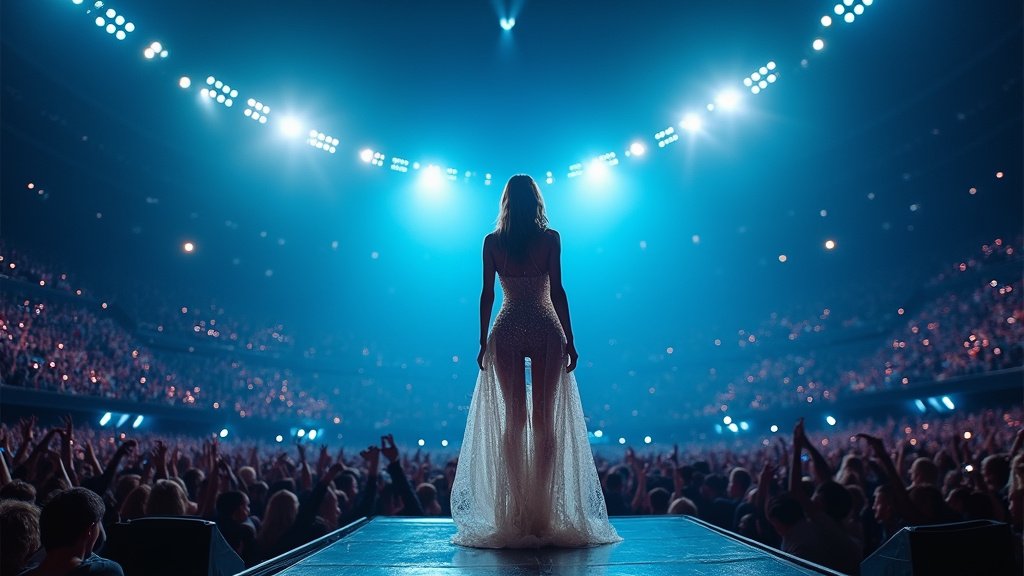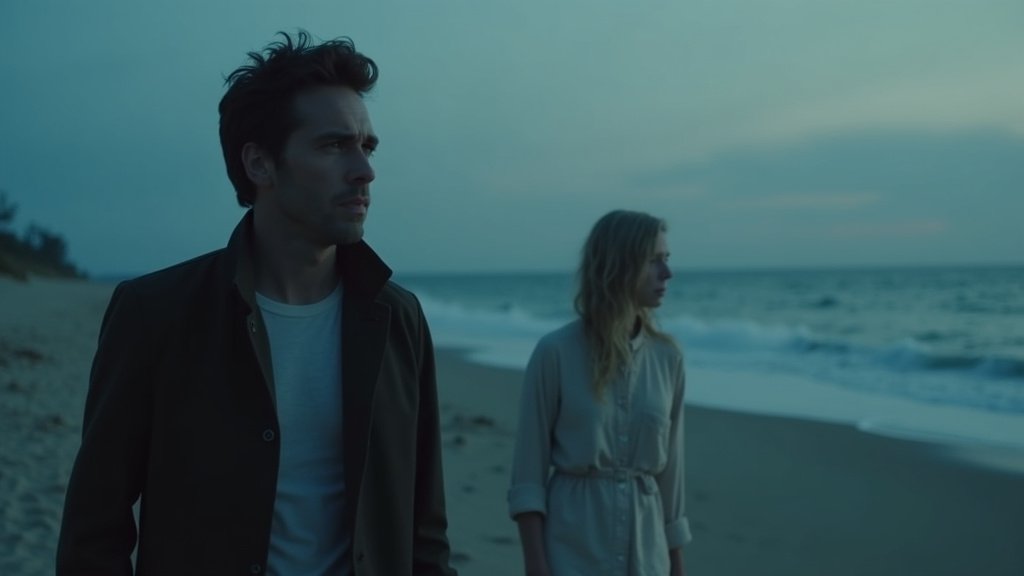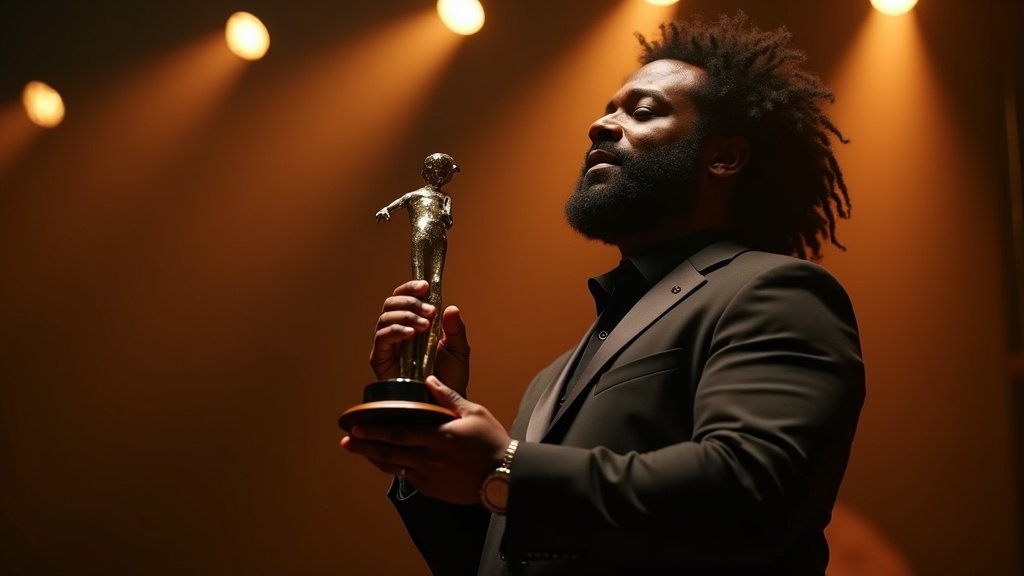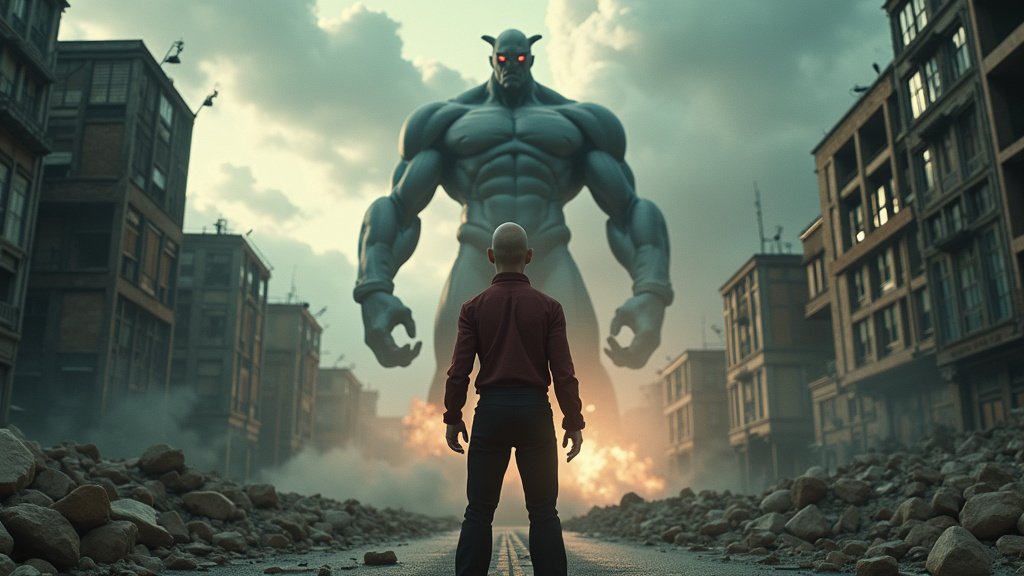The Enigmatic Allure of Pamela Anderson in ‘The Last Showgirl’
You may be just as surprised to discover a cameo by Werner Herzog in Pamela Anderson’s breezy 2023 memoir, “Love, Pamela,” as you would be to see her in one of his films. Yet, surprisingly, a potential collaboration nearly materialized, with the German auteur advising the Canadian icon: “Never audition — hold out for directors who see your worth.” This piece of wisdom resonates deeply within the context of Anderson’s latest film, “The Last Showgirl,” directed by Gia Coppola. In this dreamy character study, Anderson takes on her first solo lead role since 1996’s “Barb Wire,” portraying Shelly, a seasoned Las Vegas dancer accustomed to her status as a sex symbol.
A Cinematic Exploration of Female Icons
The film encapsulates a growing trend in cinema that scrutinizes the images of female icons, reflecting how pop culture can distort their true selves. Much like “The Substance,” which gained traction primarily through Demi Moore’s powerful performance, “The Last Showgirl” offers a nuanced examination of a woman navigating the complexities of fame and identity. However, rather than serving as a grim exposé of the entertainment industry, Coppola presents a delicate portrait of a woman who, much like Anderson, drifts through life with a sense of ethereal grace.
Coppola herself dubbed Anderson the “Marilyn [Monroe] of our time,” lauding her intellectual curiosity. Despite growing up in a culture-starved environment in rural British Columbia, Anderson absorbed influences from the French New Wave, infusing her performance with a certain je ne sais quoi. Throughout the film, she embodies a character who mirrors her own artistic ambitions, donning a hairstyle reminiscent of Brigitte Bardot and gazing toward Las Vegas’ half-scale Eiffel Tower. Shelly perceives her long-standing gig at the Razzle Dazzle as “the last descendant of Parisian Lido culture,” elevating her role beyond mere titillation.
The Dichotomy of Illusion and Reality
However, the film cleverly juxtaposes Shelly’s lofty aspirations with the perceptions of those around her. Her estranged daughter, Hannah (played by Billie Lourd), along with her producer Eddie (Dave Bautista) and younger, more cynical co-workers Mary-Anne (Brenda Song) and Jodie (Kiernan Shipka), view the Razzle Dazzle as nothing more than a tacky nudie show. This tension creates an engaging dynamic as audiences are left to question who is truly deluded in this world of glamour and glitz.
Much of the film’s humor arises from the absurdity of Shelly’s artistic ambitions. When she insists on the undeniable glamour of the Razzle Dazzle, Mary-Anne quips, “I could deny the glamour,” prompting viewers to reflect on the nature of dreams and their consequences. This leads to a compelling inquiry: Is it empowering or foolish to chase such a dream? Can Anderson’s bedazzled creation be viewed as not just feminine but also feminist? The film encourages us to explore whether it is noble to cheer someone on as they leap off a metaphorical cliff in pursuit of their aspirations.
Visual Storytelling and Cinematic Choices
The film’s cinematography, helmed by Autumn Durald Arkapaw, captures Shelly’s life through a lens that blurs the lines between reality and illusion. The focus is sharp on the present, while everything else fades into a hazy backdrop, mirroring Shelly’s inability or unwillingness to envision a future beyond the stage. She embodies a blend of naivety and self-awareness, recognizing that while she may project a certain image, the perceptions of others may not align with her self-image.
Notably, the film emphasizes that Shelly is not merely a victim of her circumstances; she is complex and multifaceted. While she exhibits selfish tendencies and a degree of snobbery—believing waitressing is beneath her and dismissing other performers—her character remains relatable. The film highlights the bittersweet reality that many women face in the entertainment industry, where the pursuit of dreams often comes with a heavy price. As Eddie breaks the news that the Razzle Dazzle is closing, the auditory cues signal the impending end of an era, resonating with the audience as a poignant metaphor for lost opportunities.
Anderson’s Multifaceted Performance
Anderson’s portrayal of Shelly is commendable; she brings to the character a blend of sincerity and playfulness that captivates audiences. Her performance reflects a deep understanding of the complexities faced by women in the industry. Despite Shelly’s glamorous exterior, moments of vulnerability shine through, particularly in scenes where she attempts to connect with her daughter over take-out Chinese food, momentarily casting aside her past to embrace familial ties.
Yet, the film poses a challenging question: How do we reconcile our admiration for a woman willing to sacrifice so much for her dreams with the harsh realities of an industry that often exploits its female stars? One casting director (Jason Schwartzman) expresses disbelief when Shelly claims to be 36, a nod to the superficiality that often governs Hollywood. The film’s brevity, at just 85 minutes, can feel padded at times, as it lingers on aesthetic elements like false eyelashes and foam rollers, creating a sense of ethereality that may overwhelm its narrative substance. However, these details serve to highlight the fantastical nature of Shelly’s reality, reminding viewers that even mundane moments can be imbued with magic.
Timeless Themes and Cultural Reflections
The film suggests that individuals often freeze at the age they felt most confident, as evidenced by Shelly’s fondness for vintage aesthetics and her outdated technology, such as a retro Walkman and a VCR. Meanwhile, the vibrant character of Annette (played by the scene-stealing Jamie Lee Curtis) offers comic relief and poignant insights into the struggles of aging in an industry that favors youth. Curtis’s performance is a highlight, featuring an unforgettable burlesque sequence that showcases her talent and charisma.
Ultimately, “The Last Showgirl” serves as a mirror reflecting society’s complicated relationship with femininity, fame, and the relentless pursuit of dreams. Anderson’s performance transcends the film itself, inviting audiences to engage with the deeper themes at play while simultaneously celebrating her resilience as a performer.
Conclusion
In conclusion, “The Last Showgirl” is more than just a film about a Las Vegas dancer; it is a thought-provoking exploration of identity, ambition, and the complexities of womanhood in a world that often reduces individuals to mere caricatures. Pamela Anderson, in her role as Shelly, commands respect and admiration, embodying the challenges faced by women in the entertainment industry with grace and authenticity. As we reflect on her journey, one can’t help but hope for a future collaboration with Herzog, where her multifaceted talent can continue to shine in new and unexpected ways.





